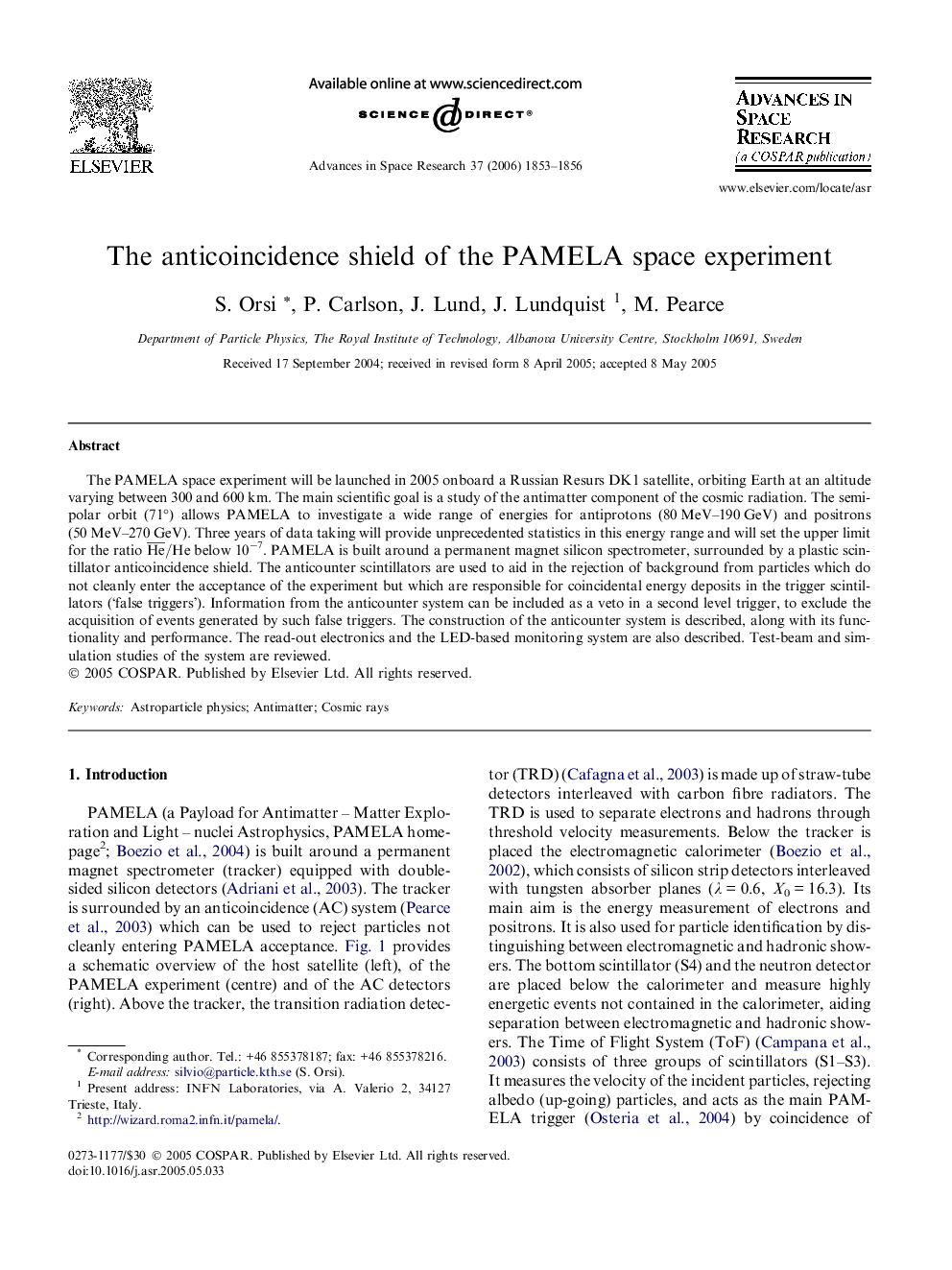| Article ID | Journal | Published Year | Pages | File Type |
|---|---|---|---|---|
| 1768451 | Advances in Space Research | 2006 | 4 Pages |
The PAMELA space experiment will be launched in 2005 onboard a Russian Resurs DK1 satellite, orbiting Earth at an altitude varying between 300 and 600 km. The main scientific goal is a study of the antimatter component of the cosmic radiation. The semipolar orbit (71°) allows PAMELA to investigate a wide range of energies for antiprotons (80 MeV–190 GeV) and positrons (50 MeV–270 GeV). Three years of data taking will provide unprecedented statistics in this energy range and will set the upper limit for the ratio He¯/He below 10−7. PAMELA is built around a permanent magnet silicon spectrometer, surrounded by a plastic scintillator anticoincidence shield. The anticounter scintillators are used to aid in the rejection of background from particles which do not cleanly enter the acceptance of the experiment but which are responsible for coincidental energy deposits in the trigger scintillators (‘false triggers’). Information from the anticounter system can be included as a veto in a second level trigger, to exclude the acquisition of events generated by such false triggers. The construction of the anticounter system is described, along with its functionality and performance. The read-out electronics and the LED-based monitoring system are also described. Test-beam and simulation studies of the system are reviewed.
